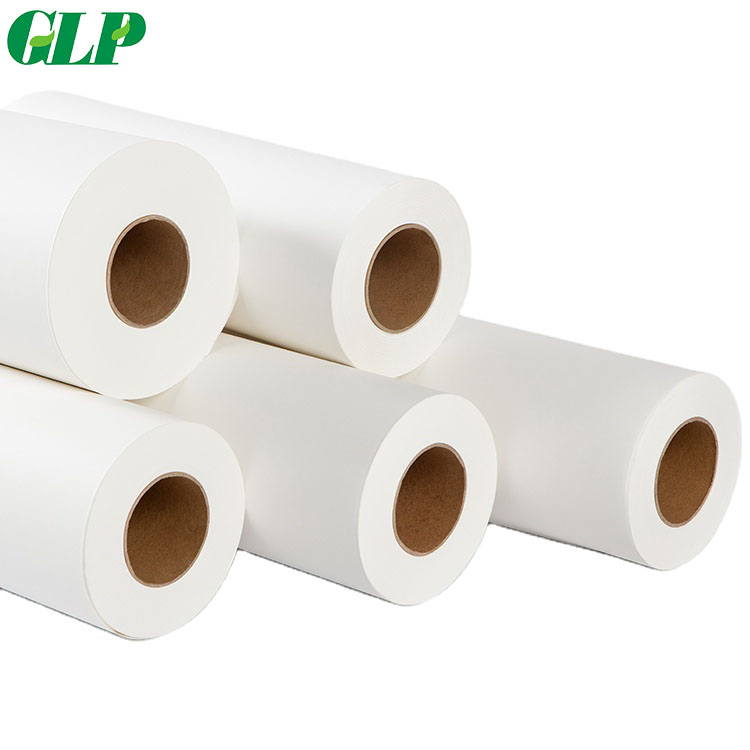1. Transfer rate
Transfer rate is a basic performance of
Heat Transfer Paper, which is different from ordinary inkjet paper. A good transfer rate can make the color of the transferred object more gorgeous and save ink. There is no transfer rate test standard in China, and domestic transfer paper manufacturers generally do not have this enterprise standard. The enterprise standard specifies the ratio of ink color to whiteness of transfer paper before and after transfer under standard transfer conditions.
2. Ink compatibility
As a transfer paper production enterprise, the transfer
Sublimation Paper produced is required to adapt to various transfer inks as much as possible, so that the solubility of the transfer paper coating to various
Sublimation Ink is appropriate, so that the ink pattern can be finely reflected on the transfer paper without penetrating the coating on the bottom paper, resulting in low transfer rate.
3. Drying speed
The fast drying speed undoubtedly makes it convenient for users to use, facilitate continuous printing and improve the delivery speed. Printing speed is also a parameter for transfer paper manufacturers to track the increasing printing speed of printers. The drying speed of world-famous transfer paper manufacturers is compared as follows: (surface hygrometer method)
Netherlands (jetcool quick drying paper) 6 points
Korea (Han Song) 11 points
China (quick drying paper) 7 points (plain paper) 19 points
3 points for an enterprise in China (however, the transfer rate is very low and the surface is rough, which is not applicable.)
4. Warpage and warpage time
Transfer paper is a kind of coated paper. The inconsistency between the expansion rate of the coating layer and the base paper under drying and high temperature will cause single-sided warpage. When the transfer paper warps, it will cause the following inconvenience:
1. The printer is inconvenient to feed paper. (normal temperature drying and warping)
2. When a large number of sheets are printed and stacked, the sorting is inconvenient due to warpage. (normal temperature drying and warping)
3. Before heat transfer, the transfer paper is warped, resulting in inaccurate alignment with the fabric, resulting in transfer failure. (normal temperature drying and warping)
4. Under the hot transfer plate, the warping and rolling of the transfer paper will cause transfer dislocation and transfer failure. (high temperature warpage)
The products produced by various transfer paper factories at home and abroad are warped to varying degrees. The warpage angle of high-quality transfer paper is small and warpage is slow, which can meet the flatness and time needs of the printing and transfer production process, and it is easy to operate.
Overcoming warpage is a difficult problem that transfer paper manufacturers work together to overcome. Using double-sided coating method can effectively improve warpage, but it increases the production cost. However, most domestic transfer paper production equipment often do not have such conditions, so they can only improve the coating formula and production process.
5. Print wrinkle wiping nozzle
Inkjet transfer paper requires that the smaller the wrinkle on the paper surface, the better. If the wrinkle is serious during printing, it is likely that the paper will arch and wipe the nozzle, especially when the paper surface roughness is large, wiping the nozzle is more likely to damage the exquisite nozzle (some enterprises add rough inorganic powder to the coating formula in order to reduce the cost, so that the surface of the transfer paper is like sandpaper). The main way to reduce the wrinkling of transfer paper is to start with the base paper. When the base paper wrinkles, the wrinkling of coating and printing is small, and then the coating formula is improved to reduce the wrinkling.
The coating formula of transfer paper adopts nano materials to ensure that the surface smoothness of transfer paper is more than 3 seconds and will not damage the nozzle.
6. Paper impurity spots
The spots (impurity spots) on the surface of transfer paper are an important index of transfer paper. These spots may arise from base paper, coating or production process. The spots seriously endanger large-area solid color printing, but have little impact on fancy printing. There are common spots on domestic transfer paper. Suzhou Quanjia company has done a lot of investigation and Research on eliminating spots, and made a lot of efforts on the generation and elimination methods of spots. It has strict regulations and control from base paper to coating formula and production process, but there may still be 1-2 spots per square meter, With the operation of the new formula and equipment transformation, it is expected to eliminate spots and reach the international advanced level.
7. Stability of mass
The stability of quality is an important indicator of usability. The surface quality of transfer paper is closely related to the user's ink, print data setting, parameter setting of transfer machine, etc. the fluctuation or continuous change of the surface quality of transfer paper will force the end user to follow the adjustment. For example, the original color calibration needs to be redone, The printing samples previously provided to customers can not be reproduced but can only be redone. Therefore, end customers need stable quality. Transfer paper manufacturers must pay great attention to this, because only stable quality can win a batch of loyal customers.




